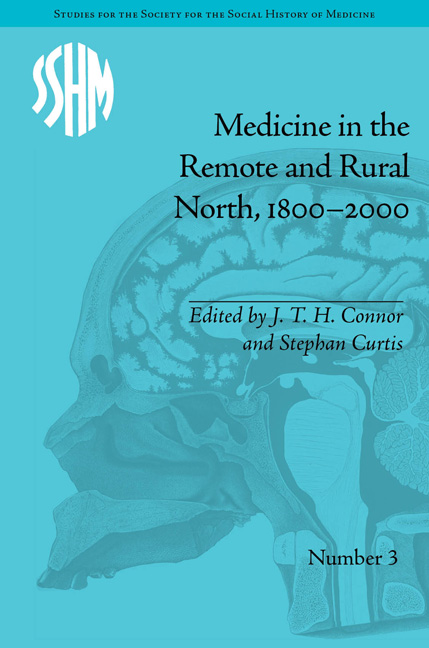Book contents
- Frontmatter
- CONTENTS
- Acknowledgements
- List of Contributors
- List of Figures and Tables
- Introduction: Cores/Peripheries – Rural/Remote: Medicine, Health-Care Delivery and the North
- Part I Remote Medicine and the State
- Part II Doctors and Doctoring in Remote Areas
- 5 A Country Doctor: Health Care in a Mid-Nineteenth-Century Swedish Remote Area
- 6 Medical Reports from the 1800s and What they Tell about Health Conditions, Population and the Work of Doctors in Peripheral Norway
- 7 ‘Medicine is Here to Stay’: Rural Medical Practice, the Northern Frontier and Modernization in 1930s' Newfoundland
- 8 Policing Practitioners on the Periphery: Elite Physicians and Profession-Building in a Bicultural Province, 1920–39
- Part III Women, Health Care and the Practice of Medicine
- Notes
- Index
7 - ‘Medicine is Here to Stay’: Rural Medical Practice, the Northern Frontier and Modernization in 1930s' Newfoundland
from Part II - Doctors and Doctoring in Remote Areas
- Frontmatter
- CONTENTS
- Acknowledgements
- List of Contributors
- List of Figures and Tables
- Introduction: Cores/Peripheries – Rural/Remote: Medicine, Health-Care Delivery and the North
- Part I Remote Medicine and the State
- Part II Doctors and Doctoring in Remote Areas
- 5 A Country Doctor: Health Care in a Mid-Nineteenth-Century Swedish Remote Area
- 6 Medical Reports from the 1800s and What they Tell about Health Conditions, Population and the Work of Doctors in Peripheral Norway
- 7 ‘Medicine is Here to Stay’: Rural Medical Practice, the Northern Frontier and Modernization in 1930s' Newfoundland
- 8 Policing Practitioners on the Periphery: Elite Physicians and Profession-Building in a Bicultural Province, 1920–39
- Part III Women, Health Care and the Practice of Medicine
- Notes
- Index
Summary
The ‘country doctor’ in the twentieth century has been analysed from numerous perspectives, but it is only recently that historians and other scholars have begun to problematize the concept of ‘rural medicine’. But what constitutes rural or remote medicine as a historical sub-specialty of the history of medicine and health? Even those who currently practice, promote and study health care in the hinterlands remain unclear about the definition of ‘rural’ while proponents may disagree, however, there seems to be a consensus that simply being ‘non-urban’ or ‘agricultural’ is not a satisfactory definition. Sparse population density and isolation are clearly factors to be considered, but so too are social and community mores and conventions (perhaps ‘the people’ and the sense of ‘place’ would be a convenient shorthand for such factors) as well as climatic extremes. The economy (or its collapse) in a region is another element that helps define rural – especially if it is/was derived primarily from the exploitation of natural resources rather than from an industrialized manufacturing base or mixed market economy. Historians, therefore, should consider local culture, climate, geography and the economy in understanding rural medicine along with the usual staples of technology, changing techniques and practice patterns, institutions, and the treatment of disease and injuries. Through study of the isolated Newfoundland outport of Twillingate located in the eastern archipelago of Notre Dame Bay, this paper considers these social and physical factors by focusing on one practitioner and his personal and professional interactions with this community during the 1930s.
- Type
- Chapter
- Information
- Medicine in the Remote and Rural North, 1800–2000 , pp. 129 - 152Publisher: Pickering & ChattoFirst published in: 2014

